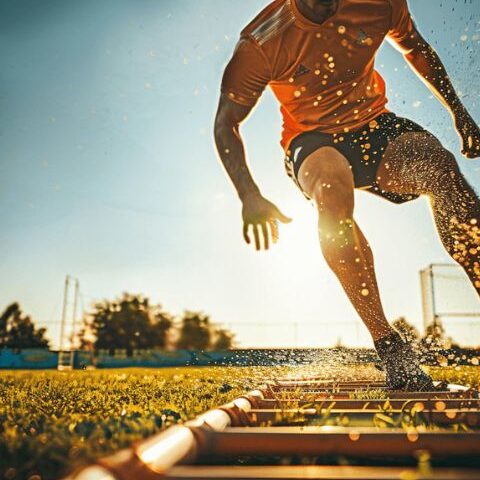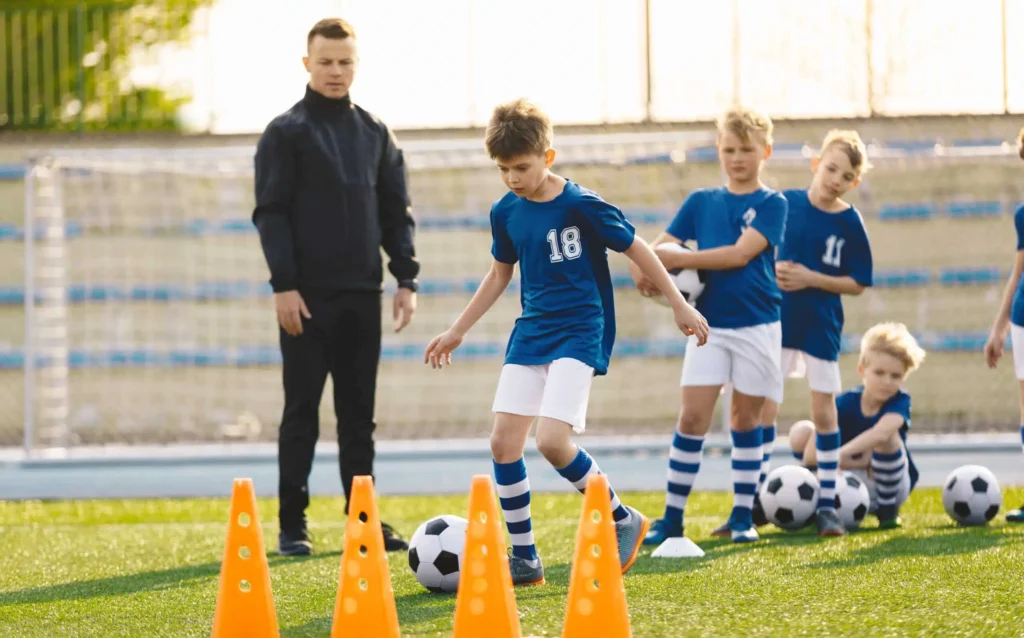
10 Best VFX Companies in Dubai, UAE
August 11, 2024
How Fixing Our Mental Health Can Improve Our Love Language
September 5, 2024
Football, often referred to as “the beautiful game,” is a sport that demands a unique combination of physical, technical, and mental abilities. Among these, coordination plays a pivotal role in determining a player’s success on the field. Coordination in football is not just about the ability to move quickly or change direction swiftly; it’s about seamlessly integrating multiple movements and skills into fluid, effective gameplay. In this article, we’ll explore why coordination is so crucial in football, how it impacts performance, and what players can do to enhance their coordination.
Understanding Coordination in Football
Coordination refers to the ability to use different parts of the body together smoothly and efficiently. In football, this includes both gross motor coordination, which involves larger muscle groups used for actions like running and jumping, and fine motor coordination, which involves smaller muscle groups for actions like dribbling and passing. Coordination in football also encompasses balance, agility, timing, and spatial awareness, all of which are essential for executing complex movements and strategies on the pitch.
The Role of Coordination in Football
1. Improved Ball Control and Dribbling Skills
One of the most apparent ways coordination manifests in football is through ball control. Players with high levels of coordination can dribble the ball with precision, even in tight spaces or under pressure. Good coordination allows players to keep the ball close to their feet, make quick changes in direction, and evade defenders effectively. Without proper coordination, even the most technically gifted players would struggle to maintain possession, leading to lost opportunities and turnovers.
2. Enhanced Passing and Shooting Accuracy
Passing and shooting are fundamental skills in football that require a high degree of coordination. To execute a successful pass, players need to synchronize their movements, balance, and timing to deliver the ball accurately to a teammate. Similarly, shooting requires the coordination of foot-eye movements, balance, and power to direct the ball towards the goal with precision. Players with superior coordination can consistently perform these actions under pressure, increasing their effectiveness on the field.
3. Superior Agility and Balance
Agility is the ability to change direction quickly and effectively while maintaining balance. In football, players often need to make sharp turns, swerve past opponents, and react rapidly to the ever-changing dynamics of the game. Coordination is the underlying factor that enables this agility. A well-coordinated player can maintain their center of gravity while performing quick directional changes, reducing the risk of losing balance or falling.
Balance is equally important, as it allows players to stay upright and stable, even when challenged by opponents. Whether it’s going up for a header, shielding the ball from a defender, or executing a tricky maneuver, balance ensures that players can maintain control over their actions and avoid injury.
4. Effective Defensive Play
Coordination is not only essential for attacking players but also for defenders. Defenders need to time their tackles perfectly, anticipate the movements of the opposing players, and position themselves effectively to intercept passes or block shots. This requires a high level of coordination, particularly in terms of footwork and body positioning. A well-coordinated defender can read the game better, make more accurate tackles, and contribute to the team’s defensive solidity.
5. Seamless Teamwork and Communication
Football is a team sport, and successful teams rely on coordinated efforts between players. Coordination is essential for effective teamwork, as it allows players to understand each other’s movements and intentions without needing constant verbal communication. This is particularly important in set-pieces, where timing and synchronization between players can be the difference between scoring a goal or missing an opportunity.
Coordination also plays a role in defensive organization, where players need to maintain a cohesive unit to close down spaces and prevent the opposition from creating chances. Well-coordinated teams can move together as a unit, anticipate each other’s actions, and execute complex tactical plans with precision.
How to Improve Coordination in Football
Given the importance of coordination in football, it’s essential for players to work on improving this skill. Here are some effective ways to enhance coordination:
1. Footwork Drills
Footwork drills are designed to improve a player’s agility, balance, and coordination. These drills often involve quick changes of direction, lateral movements, and intricate foot patterns. Examples include ladder drills, cone drills, and zig-zag runs. By regularly practicing these drills, players can develop quicker, more coordinated foot movements that will benefit them on the pitch.
2. Balance Exercises
Balance exercises help players maintain stability during dynamic movements. Exercises such as single-leg stands, balance board training, and core strengthening routines can improve a player’s ability to stay balanced while performing football-specific actions. Incorporating balance exercises into a regular training regimen can significantly enhance a player’s coordination and reduce the risk of injuries.
3. Ball Control Drills
Ball control drills are essential for developing fine motor coordination. Drills that focus on dribbling, juggling, and controlling the ball with different parts of the body (feet, thighs, chest) can help players become more comfortable with the ball at their feet. The more comfortable a player is with controlling the ball, the more coordinated their movements will be during a game.
4. Vision and Reaction Training
Coordination in football is also closely tied to a player’s ability to react quickly to visual cues. Vision and reaction training exercises, such as reaction ball drills, light-based agility drills, and peripheral vision training, can improve a player’s ability to coordinate their movements based on what they see on the pitch. These exercises enhance a player’s overall awareness and responsiveness, leading to better decision-making and quicker reactions during a match.
5. Team Drills and Small-Sided Games
Team drills and small-sided games are excellent ways to develop coordination within a team context. These exercises simulate real-game scenarios, requiring players to coordinate their movements with teammates while under pressure. By regularly participating in these drills, players can improve their teamwork, communication, and overall coordination on the field.
The Impact of Coordination on Football Performance
Coordination is a critical component of football performance, influencing nearly every aspect of a player’s game. Players with high levels of coordination are more effective in both offensive and defensive roles, can execute skills with greater precision, and are less prone to injuries. Moreover, coordination enhances a player’s ability to work effectively within a team, contributing to better overall team performance.
For coaches and players alike, recognizing the importance of coordination and prioritizing it in training can lead to significant improvements in performance. Whether it’s through individual drills, balance exercises, or team-based activities, developing coordination should be a key focus for anyone looking to excel in football.
Conclusion
Coordination in football is more than just a physical ability; it’s a fundamental skill that underpins successful gameplay. From ball control to passing accuracy, from agility to teamwork, coordination is the thread that weaves together all aspects of a player’s performance. By understanding its importance and working to improve it, players can elevate their game and contribute more effectively to their team’s success. In the ever-competitive world of football, where the margins between victory and defeat are razor-thin, coordination can be the deciding factor that separates the best from the rest.




